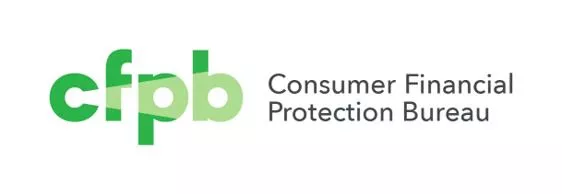Understanding Consumer Access to Financial Records: Insights from Stakeholder Roundtable
Insights from a joint public roundtable on consumer access to financial records highlighted key points such as regulatory requirements under Dodd-Frank Act section 1033, market practices in leveraging consumer data, examples of use cases for consumer data, and stakeholder developments. The discussion covered information availability, electronic formats, standardized formats, data collection practices, and various services utilizing consumer financial data.
Download Presentation

Please find below an Image/Link to download the presentation.
The content on the website is provided AS IS for your information and personal use only. It may not be sold, licensed, or shared on other websites without obtaining consent from the author. Download presentation by click this link. If you encounter any issues during the download, it is possible that the publisher has removed the file from their server.
E N D
Presentation Transcript
Consumer Access to Financial Records Joint Public Roundtable of the Consumer Advisory Board, Community Bank Advisory Council, & Credit Union Advisory Council Gary Stein, Deputy Assistant Director, Office of Consumer Credit, Payment & Deposit Markets Will Wade-Gery, Senior Advisor, Office of Innovation Max Bentovim, Financial Analyst, Office of Consumer Credit, Payment & Deposit Markets Zachary Wong, Director s Financial Analyst, Office of Innovation November 18, 2020
Dodd-Frank Act section 1033 1. Subject to rules prescribed by the Bureau, a covered person shall make available to a consumer, upon request, information in the control or possession of the covered person concerning the consumer financial product or service that the consumer obtained from such covered person, including information relating to any transaction, series of transactions, or to the account including costs, charges and usage data. 2. The information shall be made available in an electronic form usable by consumers. 3. The Bureau, by rule, shall prescribe standards applicable to covered persons to promote the development and use of standardized formats for information[.] 4. However, 1033 does not impose any duty on a covered person to maintain or keep any information about a consumer. Also, 1033 contains certain exceptions, including that it applies only to information that the covered person can retrieve in the ordinary course of its business with respect to that information. Note: Dodd-Frank Act Section 1002(4) defines consumer as an individual or an agent, trustee, or representative acting on behalf of an individual. 2
Market practices 1. Fintechs, FIs, and other companies leverage consumer account data to provide or enhance consumer financial services 2. Many contract with aggregators to collect data 3. Collection practices vary; predominantly screen scraping; some use of dedicated portals and APIs 4. Many sharing arrangements still rely on the aggregator holding consumer account credentials 5. Stakeholders may play multiple different roles, and competitive dynamics are complex 3
Examples of use cases for consumer data 1. 2. 3. 4. 5. 6. 7. 8. 9. 10. Fraud and identity theft detection 11. Investment management and other non-consumer business services Personal financial management (PFM) Automatic or motivational savings Budgeting analysis and advice Product recommendations Account verification Loan application information Credit decisioning Cash flow management Funds transfer and bill payment 4
Stakeholder developments 1. A number of large banks and major aggregators have negotiated or are negotiating bilateral contractual agreements 2. Several industry trade organizations and other organizations are working to develop data sharing standards 3. Key stakeholders are merging or being acquired 5
Market issues and risks 1. 2. Access reliability and technical burdens 3. Data security 4. Consumer control and privacy 5. Application of existing laws 6. Data accuracy Scope of data access 6
Bureau activity prior to 2020 Consumer Protection Principles 1. Access 2. Data scope and usability 3. Control and informed consent 4. Authorizing payments 5. Security 6. Access transparency 7. Accuracy 8. Ability to dispute and resolve unauthorized access 9. Efficient and effective accountability mechanisms 1. RFI on Consumer Access to Financial Records a. Published November 2016 b. Approximately 74 responses 2. "Consumer Protection Principles" a. Published October 18, 2017 b. Simultaneously published Stakeholder Insights Informed the Principles Drawn from RFI responses and Bureau outreach 3. Market monitoring and outreach 7
February 26, 2020 Symposium 1. Goal: identifying and planning next steps with regard to: a. 1033 policymaking b. Ongoing data aggregation-related market monitoring 2. Three panels: a. Consumer interests b. Market developments c. Regulator roles 3. Participants included representatives of financial institutions, data aggregators, data users, consumer advocates, and academics 4. Symposium summary published July 24 with announcement of the Bureau's intention to issue an ANPR later in the year 8
October 22, 2020 ANPR 1. Goal: soliciting comments and information that will assist the Bureau in developing regulations under section 1033 2. Comments due February 4, 2021 ANPR Structure Introduction I. Section 1033 overview II. Definitions III. Background IV. Bureau actions to date V. Topics on which the Bureau seeks comment 9
ANPR question topics 1. 2. Competitive incentives and authorized data access 3. Standard-setting 4. Access scope 5. Consumer control and privacy 6. Legal requirements other than section 1033 7. Data security 8. Data accuracy 9. Other information Benefits and costs of consumer data access 10
Discussion questions for Advisory Councils 1. How do you envision consumers benefiting from consumer data access? How different is this vision from what you observe in the marketplace today? 2. What risks does the current state of consumer data access present for consumers? 3. What impediments do consumers and the marketplace face to safe consumer data access? 4. How could the Bureau most efficiently and effectively implement section 1033? 11
Contact information Gary Stein Deputy Assistant Director, Office of Consumer Credit, Payment, & Deposit Markets Gary.Stein@cfpb.gov (202) 435-7509 Will Wade-Gery Senior Advisor, Office of Innovation William.Wade-Gery@cfpb.gov (202) 435-7289 Max Bentovim Financial Analyst, Office of Consumer Credit, Payment, & Deposit Markets Max.Bentovim@cfpb.gov (202) 435-9751 Zachary Wong Director s Financial Analyst, Office of Innovation Zachary.Wong@cfpb.gov (202) 435-7436 12

 undefined
undefined




























